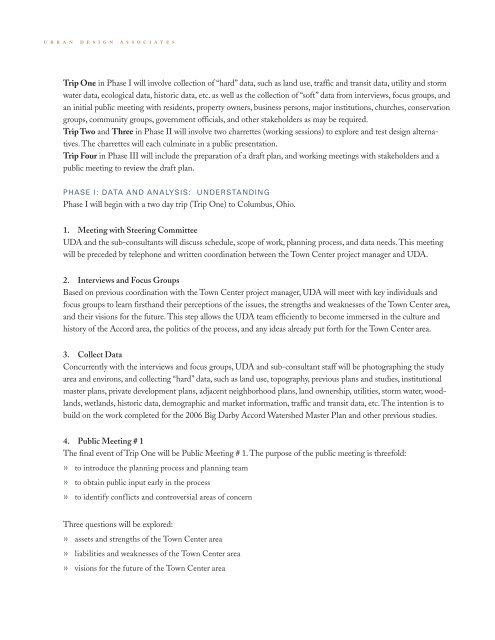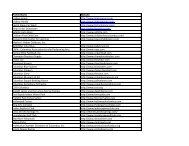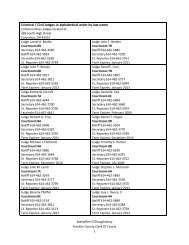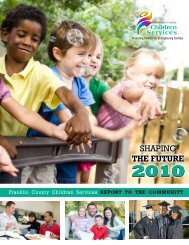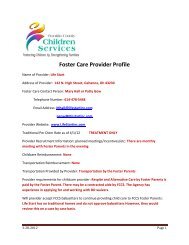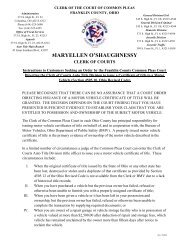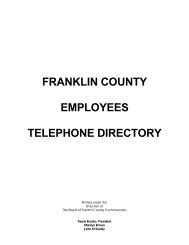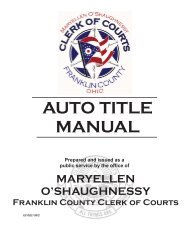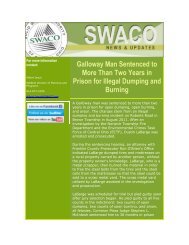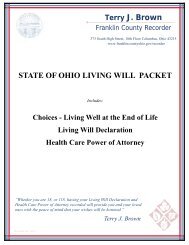Big Darby Accord Town Center Master Plan Consultant Proposal
Big Darby Accord Town Center Master Plan Consultant Proposal
Big Darby Accord Town Center Master Plan Consultant Proposal
You also want an ePaper? Increase the reach of your titles
YUMPU automatically turns print PDFs into web optimized ePapers that Google loves.
urban design associates<br />
Trip One in Phase I will involve collection of “hard” data, such as land use, traffic and transit data, utility and storm<br />
water data, ecological data, historic data, etc. as well as the collection of “soft” data from interviews, focus groups, and<br />
an initial public meeting with residents, property owners, business persons, major institutions, churches, conservation<br />
groups, community groups, government officials, and other stakeholders as may be required.<br />
Trip Two and Three in Phase II will involve two charrettes (working sessions) to explore and test design alternatives.<br />
The charrettes will each culminate in a public presentation.<br />
Trip Four in Phase III will include the preparation of a draft plan, and working meetings with stakeholders and a<br />
public meeting to review the draft plan.<br />
PHASE I: DATA AND ANALYSIS: UNDERSTANDING<br />
Phase I will begin with a two day trip (Trip One) to Columbus, Ohio.<br />
1. Meeting with Steering Committee<br />
UDA and the sub-consultants will discuss schedule, scope of work, planning process, and data needs. This meeting<br />
will be preceded by telephone and written coordination between the <strong>Town</strong> <strong>Center</strong> project manager and UDA.<br />
2. Interviews and Focus Groups<br />
Based on previous coordination with the <strong>Town</strong> <strong>Center</strong> project manager, UDA will meet with key individuals and<br />
focus groups to learn firsthand their perceptions of the issues, the strengths and weaknesses of the <strong>Town</strong> <strong>Center</strong> area,<br />
and their visions for the future. This step allows the UDA team efficiently to become immersed in the culture and<br />
history of the <strong>Accord</strong> area, the politics of the process, and any ideas already put forth for the <strong>Town</strong> <strong>Center</strong> area.<br />
3. Collect Data<br />
Concurrently with the interviews and focus groups, UDA and sub-consultant staff will be photographing the study<br />
area and environs, and collecting “hard” data, such as land use, topography, previous plans and studies, institutional<br />
master plans, private development plans, adjacent neighborhood plans, land ownership, utilities, storm water, woodlands,<br />
wetlands, historic data, demographic and market information, traffic and transit data, etc. The intention is to<br />
build on the work completed for the 2006 <strong>Big</strong> <strong>Darby</strong> <strong>Accord</strong> Watershed <strong>Master</strong> <strong>Plan</strong> and other previous studies.<br />
4. Public Meeting # 1<br />
The final event of Trip One will be Public Meeting # 1. The purpose of the public meeting is threefold:<br />
» to introduce the planning process and planning team<br />
» to obtain public input early in the process<br />
» to identify conflicts and controversial areas of concern<br />
Three questions will be explored:<br />
» assets and strengths of the <strong>Town</strong> <strong>Center</strong> area<br />
» liabilities and weaknesses of the <strong>Town</strong> <strong>Center</strong> area<br />
»<br />
visions for the future of the <strong>Town</strong> <strong>Center</strong> area


